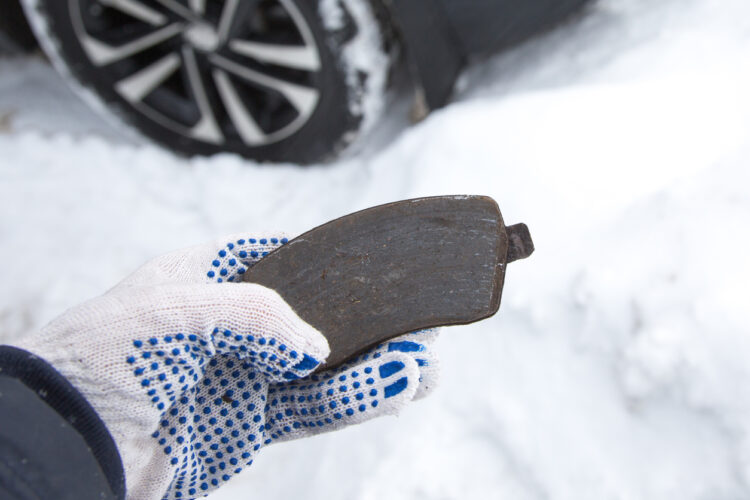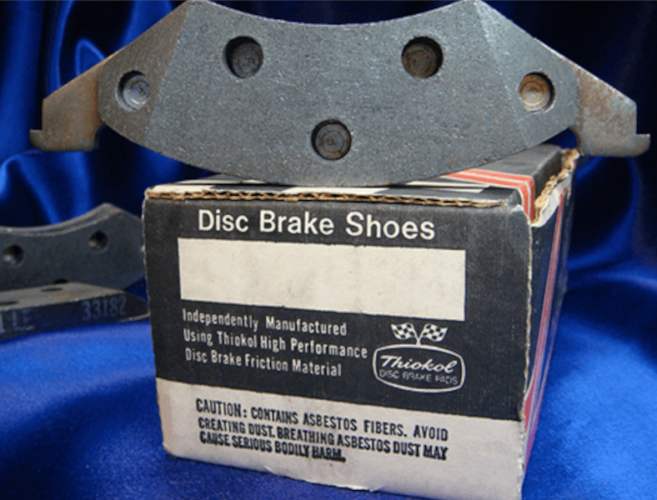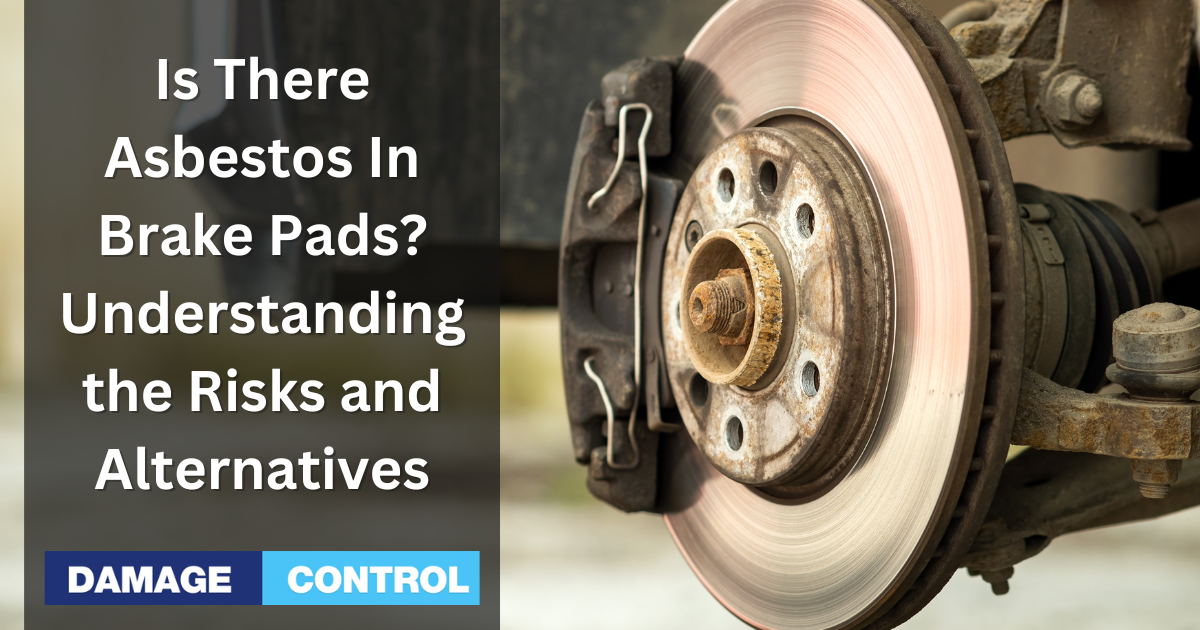Asbestos, a natural mineral once prevalent in building materials, insulation, and car parts, is now recognized as a carcinogen. Many countries, including the U.S., have outlawed it. Nevertheless, some older vehicles might still sport asbestos in their brake pads, presenting health hazards to those who interact with these vehicles.
Many countries have phased out asbestos use in brake pads. Still, it lurks in some aftermarket brakes, especially those imported from abroad. Known for its heat resistance and excellent friction, asbestos was a popular choice for brake pads. Now, safer alternatives have taken its place. Yet, it's essential for mechanics and car owners to remain alert to the potential risks in older vehicles. This proactive approach ensures safer, healthier interactions with our vehicles.
What Are Brake Pads?

Brake pads are an essential component of a vehicle's braking system. They are the replaceable friction pads that press against a vehicle's brake rotor to slow or stop the wheels from rotating. Brake pads are crucial in ensuring a vehicle's and its passengers' safety.
Brake pads are typically made of a combination of materials, including metal, organic materials, and sometimes ceramic. The type of material used in a brake pad can affect its performance, durability, and noise level.
Metallic brake pads are composed of iron, copper, steel, and graphite. They are durable and can withstand high temperatures, making them ideal for heavy-duty vehicles. However, they tend to produce more noise and dust than other types of brake pads.
Organic brake pads are made of rubber, glass, and Kevlar materials. They are softer and quieter than metallic brake pads but tend to wear out faster and produce more dust.
Ceramic brake pads are made of ceramic fibers, nonferrous filler materials, and bonding agents. They are quieter and produce less dust than other types of brake pads. They also have a longer lifespan than organic brake pads but are more expensive.
Brake pads are designed to wear out over time and need to be replaced periodically. Most manufacturers recommend replacing brake pads every 25,000 to 70,000 miles, depending on the type of vehicle and driving conditions.
The Use of Asbestos in Brake Pads
Asbestos once reigned due to its superb heat resistance and durability in the realm of brake pads. However, as we now understand, asbestos is a known carcinogen, posing serious health risks.
Up until the 1990s, asbestos featured prominently in brake pads. But with awareness of its health risks, many countries banned asbestos in brake pads. Now, the majority of brake pads are asbestos-free, though you can still stumble upon some in older vehicles.
Keep in mind, not all brake pads are equal. Some employ organic materials like rubber, Kevlar, and ceramic, whereas others use metallic elements. Organic brake pads are generally considered safer, given they are free from asbestos or other harmful substances.
If you're unsure about the asbestos content in your brake pads, some indicators can help. First, inspect the brake pad's packaging or labels for asbestos information. Even if the packaging doesn't mention asbestos, it's wise to get the brake pads tested.
One more clue can be the color of the dust produced when you brake. Asbestos brake pads typically generate white or gray dust, while their non-asbestos counterparts create darker dust. In this way, staying informed and vigilant helps us ensure our cars remain safe and healthy to use.
The Risks of Asbestos Exposure
Asbestos is a naturally occurring mineral that was commonly used in the automotive industry for many years. It was used in brake pads, clutch pads, and other automotive products because of its heat-resistant properties. However, asbestos is a known carcinogen and can cause serious health problems if it is breathed in or comes into contact with the skin.
Exposure to asbestos can lead to a variety of serious health problems, including lung cancer, mesothelioma, and asbestosis. These diseases can take years to develop and may not show symptoms until decades after exposure. Asbestos-related diseases can be fatal, and there is no known cure.
The risk of asbestos exposure is particularly high for mechanics who work with brake pads and other automotive products that contain asbestos. When these products are disturbed, asbestos fibers can become airborne and be inhaled. This can lead to long-term health problems.
It is important to note that not all brake pads contain asbestos. In fact, many manufacturers have stopped using asbestos in their products. However, older vehicles may still have brake pads that contain asbestos, so it is important to take precautions when working on these vehicles.
If you are a mechanic or work with automotive products that may contain asbestos, it is important to follow proper safety procedures. This includes wearing protective gear, such as gloves and a respirator, and using tools that are specifically designed to minimize the release of asbestos fibers.
Alternatives to Asbestos in Brake Pads
If you're on the lookout for safer and better-performing alternatives to asbestos in brake pads, there's good news: several superior options exist.
Non-asbestos organic (NAO) brake pads are a widely accepted alternative. Composed of a blend of organic materials like rubber, fiber, and resin, NAO brake pads offer an affordable and eco-friendly solution. Plus, they're quieter and generate less dust than their asbestos counterparts.
Ceramic brake pads represent another excellent substitute. Crafted from a fusion of ceramic fibers and materials like metal or resin, they are highly durable with a lengthy lifespan, making them ideal for high-performance vehicles. Like NAO brake pads, ceramics also produce less dust and noise.
For performance enthusiasts, carbon-ceramic brake pads are a top-tier choice. Made from carbon fibers and ceramic materials, they offer superior heat resistance and stopping power, favored in racing and high-performance cars.
What You Need to Know About Asbestos in Brake Pads

Asbestos, a naturally occurring mineral, was once a common ingredient in various products, brake pads included. Although banned in numerous countries, including the United States, some brake pads may still contain asbestos.
As a recognized carcinogen, asbestos can lead to serious health conditions like lung cancer, mesothelioma, and asbestosis. Therefore, when handling brake pads or materials that might contain asbestos, it's crucial to proceed with caution.
Automotive technicians and DIY mechanics dealing with brakes and clutches should protect themselves from possible asbestos dust exposure. Using safety gear, such as a respirator, is key.
Thankfully, many manufacturers have shifted away from asbestos, adopting safer alternatives that are kinder to both mechanics and our environment. If you have safety concerns about your brake pads, consult the manufacturer or a trusted mechanic to verify whether they contain asbestos. Being informed and proactive can create safer and healthier environments for everyone.
Conclusion
In conclusion, while asbestos is not commonly found in modern brake pads, it may still exist in older vehicles. It's vital to stay informed and take appropriate safety measures when dealing with potential asbestos exposure.

